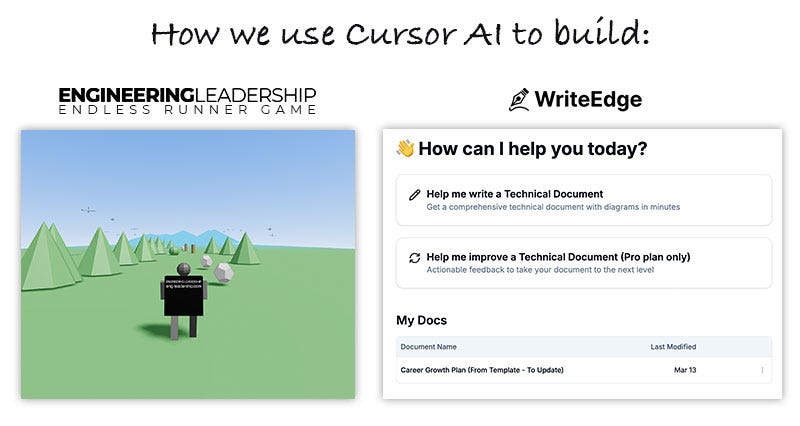How to use Cursor AI to build side projects
Together with Jordan and Sidwyn, we are sharing two real-world examples of side projects and how we use Cursor to build them!
Intro
When I was going through all the insights shared by the awesome engineering leaders in the article How to use AI to increase Software Development productivity one thing has been repeating in almost all the cases.
A lot of leaders shared that the use of Cursor has significantly increased the Software Development productivity of their teams.
I used Cursor before but haven’t made the switch from VS Code. However, after going through the insights, I was convinced that it was a good time to do a deeper dive.
In this article, we will go through how you can use Cursor to build side projects and lucky for us, we also have 2 guests with us today:
Jordan Cutler, Senior Software Engineer at Pinterest
Sidwyn Koh, Staff Software Engineer at Meta
They are building their side project called WriteEdge with Cursor and are sharing behind the scenes how they are doing that.
Disclaimer: This article is not sponsored by Cursor, we are just sharing our insights based on real-world experience to help you launch your side projects f…






